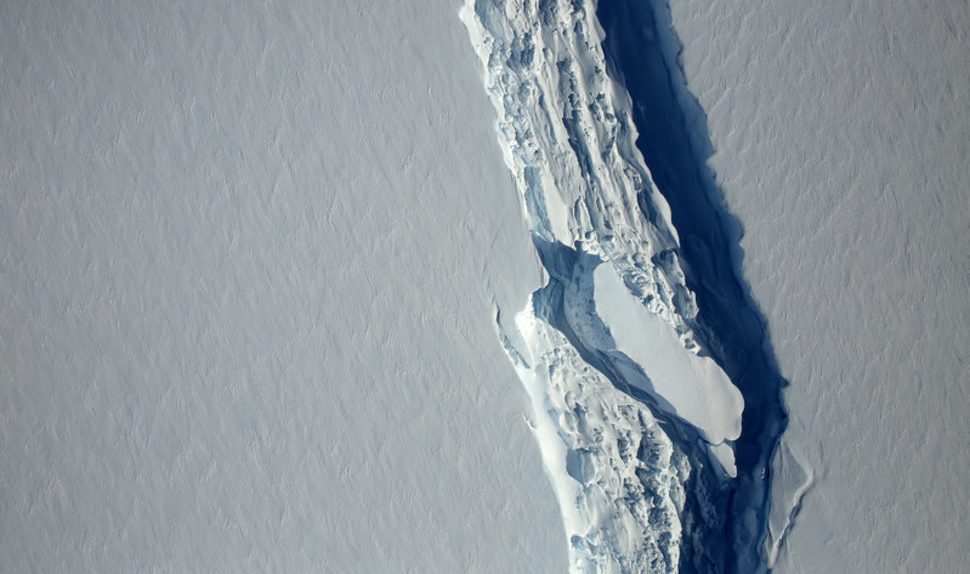It’s now been well over a year since a colossal chunk of ice snapped off of the Larsen C ice shelf in Antarctica. The ice was cracking for months, with scientists watching closely to see the progress of the break until it eventually broke completely free. The state-sized slab of ice began moving slowly away from the area of the ice shelf where it originated, sloshing back and forth, but now, seemingly out of nowhere, it’s begun to pivot and rapidly turn.
Researchers have been keeping an eye on the iceberg ever since it broke off. They’ve been mapping its movements which, up until recently, have been pretty mundane and predictable. This past July, that all changed, and the glacier is now spinning.

In a series of satellite images pieced together by Mark Brandon of the Open University, you can see the iceberg now resting at a right angle to the Larsen C shelf. This change in position only began about two months ago, and it’s a dramatic shift for such a massive chunk of ice, but why is it happening?
“It might have been shaken loose by winds or ocean currents, or it might be that the natural thinning process (from both melting and the flow of the ice) has lifted the bottom of the iceberg off the sea bed,” Martin O’Leary of Project MIDAS, which has been studying the shelf and the iceberg, told Earther. “In any case, it looks like the berg is now a lot more free to move about, so it will probably continue to rotate, and to move out to sea.”
It’s unclear what the future holds for the iceberg, but there’s a good chance that its continued rotation will cause it to collide with the Larsen C shelf, possibly causing smaller chunks to break off and spread.








